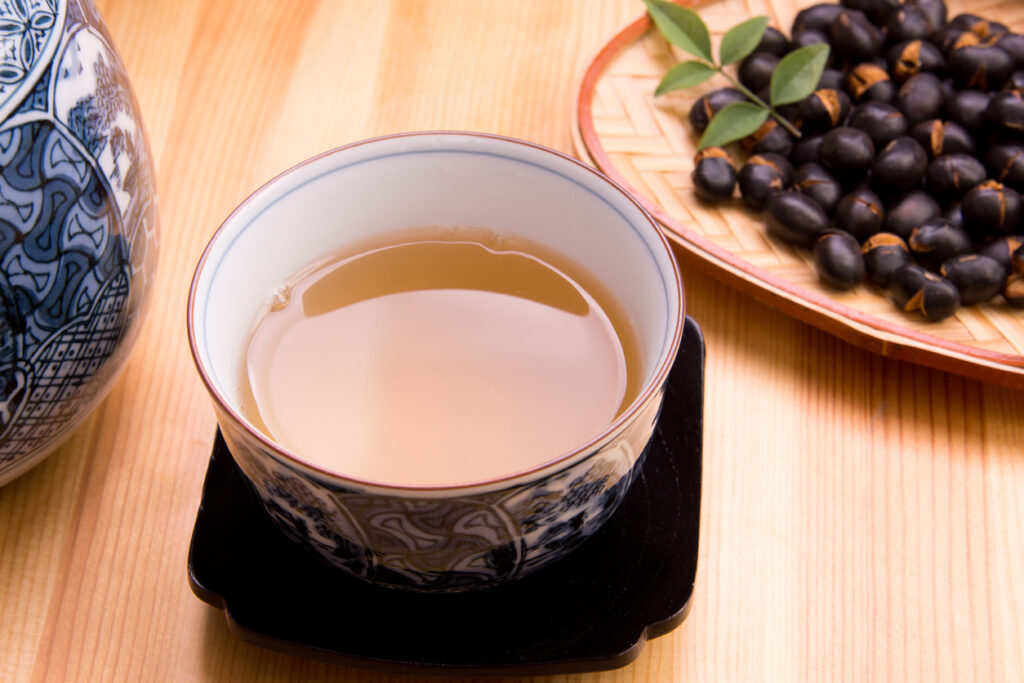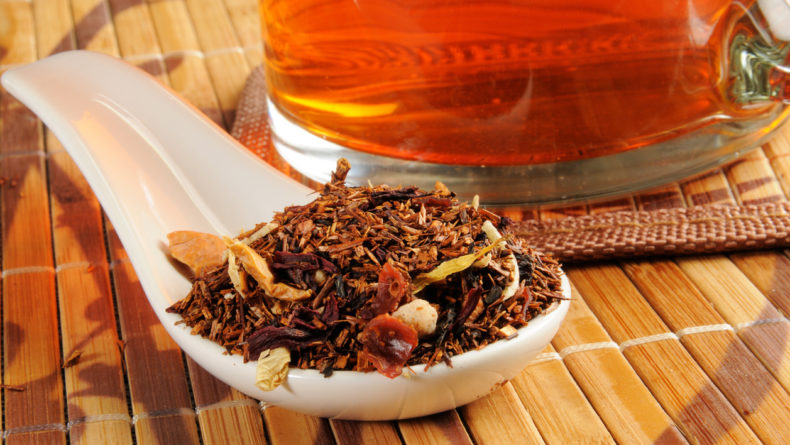Refreshing Leaves: 5 Summertime Teas to Help Beat the Heat
Get Healthy And Hydrated In Japan
Unlike sweetened American ice tea or the deep and dark black teas that keep us toasty in the winter, the Japanese teas that reign supreme in the summer months are light and refreshing, as well as packed with minerals and antioxidants to counter the heat and humidity of July and August.
I am a tea person. Even in the warmest and stickiest of weather, you can find me with teacup in hand. In Canadian temperate summers, I continued with my cold weather routine of warm brews. But, on the most sweltering of days here in Japan, I need a beverage that still hits the “tea” spot, yet provides the comfort that a steaming tea latte gives me in the fall and winter.
 © Photo by iStock: kuppa_rock
© Photo by iStock: kuppa_rockAnd so I began my search for cool and refreshing Japanese teas. Certainly, in convenience stores, supermarkets and vending machines, Japan was selling tea to drink in the summer. But, which ones would really help me overcome the endless heat waves? And, how could I replicate this at home, thus saving money and plastic bottles?
Below are five teas that I recommend for summer in Japan as well as the stylish and effective goods that you need to become your own tea master at home.
1. Mugicha
 © Photo by iStock: Wako Megumi
© Photo by iStock: Wako MegumiOut of all the teas highlighted in this article, mugicha (barley tea) is probably one of the most popular and nostalgic summertime tea drinks in Japan. Mugicha is brewed from roasted barley grains, producing a rich aroma, as well as an earthy and nutty flavor. Although you can drink mugicha all year round either hot or cold, cold-brewed mugicha is well-known for its cooling effect on the body and its nutrient-replenishing properties which make it ideal for sweaty summer days. It is also naturally caffeine-free so people of all ages can enjoy its refreshing taste and health benefits, such as aiding digestion and preventing tooth decay.
Mugicha is usually sold in conveniently-sized tea bags that you can brew hot or cold. Cold-brew mugicha will need to steep for a few hours to reach its peak flavor, but if you can’t wait, hot-brew it instead using boiling water, and then serve it over ice for a quick refreshment.
2. Mizudashi Ryokucha
 © Photo by iStock: kazoka30
© Photo by iStock: kazoka30Mizudashi is the Japanese word for cold brew. Cold brewing ryokucha (Japanese green tea) is known for bringing out their more mellow flavors. While some sencha (type of green tea), for instance, can taste astringent, mizudashi sencha results in a smoother and sweeter cup of green. Importantly for the summer months, brewing tea this way lowers the amount of caffeine, thus making it more hydrating and less diuretic than its warm counterparts. Also, by steeping for a longer period, the vitamin C and theanine, known to reduce blood pressure and improve cognitive function, in the tea are preserved.
To make mizudashi ryokucha, place 10-15 grams of your preferred green tea per one liter of cold water in a cold brew bottle (see below for buying details). Allow over three hours to steep, then enjoy.
3. Hojicha
 © Photo by iStock: Hana-Photo
© Photo by iStock: Hana-PhotoOften associated with the fall and winter months, hojicha (roasted Japanese green tea) is also a strong candidate for a summertime beverage. Made by steaming and then roasting green tea leaves at a high temperature, hojicha is known for its deep umami flavor. Yet, it also has a low caffeine content and inherent sweetness that results in a delicious and unique cup of tea as a cold brew! Indeed, if you seek out kuki (stem) hojicha in particular, the tea’s caffeine content will be at its lowest, making it a wonderful pick for the hottest days. While you can certainly pick up a bottle of cold hojicha at the local conbini, why not try steeping it yourself using our instructions for mizudashi ryokucha above?
4. Sanpincha
 © Photo by iStock: Epitavi
© Photo by iStock: EpitaviSanpincha refers to a traditional Okinawan tea with a flavor profile similar to Chinese Jasmine tea and packed with vitamin C, vitamin E and minerals. Before becoming part of the Japanese mainland, present-day Okinawa’s Ryukyu Kingdom had strong trade ties with China. As such, sanpincha, whose etymology stems from the Chinese word for Jasmine tea, developed in Okinawa before popularizing in the rest of Japan. But, unlike Jasmine which is typically made with white or green tea, sanpincha uses semi-oxidized tea as a base, making it closer to an oolong. Perhaps the most caffeinated of the teas on this list, warm or cold sanpincha is often enjoyed as a refreshing pick-me-up for your workday. You can steep your own sanpincha at home, using 80-degree water for a warm brew and following our mizudashi instructions above for cold.
5. Kuromamecha
 © Photo by iStock: Promo_Link
© Photo by iStock: Promo_LinkKuromamecha is a herbal tea made through the roasting of black soybeans grown largely in the Hokkaido region. Known for its sweet and nutty taste, this tea is typically steeped using whole beans that can be consumed for extra fiber after you have finished brewing them for tea. Kuromamecha is popular for its anti-aging properties, mainly due to its high levels of antioxidants like anthocyanin, which not only give the beans their dark pigmentation but also helps regulate blood pressure. Brew kuromamecha similarly to mugicha and enjoy the multitude of health benefits in every cup this summer.
Summer tea shopping guide
If you’re going to be making the teas for yourself, you need only the best items. Here are five key tea goods to make the most of your summer teatime experience.
- Mesh tea strainer: to ensure clean steeping, opt for the finest mesh tea strainers for sencha and other greens. Try this deep mesh strainer from Sato Metal Industries.
- Cold brew teapot: For home use, try this streamlined and attractive pot from Takeya to have your mizudashi tea cool in the fridge until you’re ready to pour it into your teacup.
- Mugicha kettle: To make the finest barley tea, follow tradition and opt for a kettle. This Yoshikawa one, built with a strainer made for mugicha, can helpfully weather the transition from piping hot to cool in the fridge.
- On-the-go bottle: While you could just pour your perfectly steeped tea into a regular water bottle, there are innovative and stylish products, like Hario’s portable filter-in bottle, that save you even more time. Simply fill the filter with tea leaves the night before and grab it the next morning on your way out the door.
- Teacups: Finding a teacup that warms your heart in Japan is a very personal journey. This summer though I’ve been enjoying contemplating the soft colors of my brewed tea in Hario’s cutely shaped heat-resistant glass cups.
Keep cool and happy sipping!
















Leave a Reply